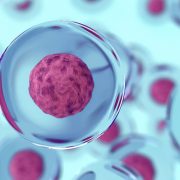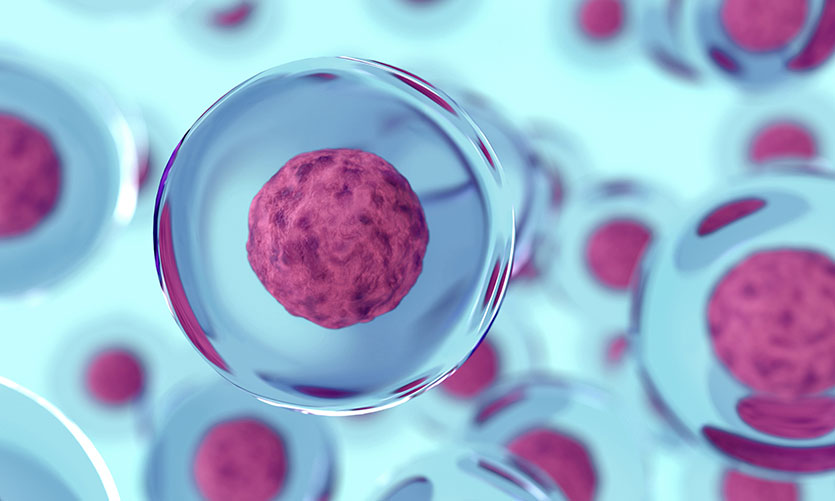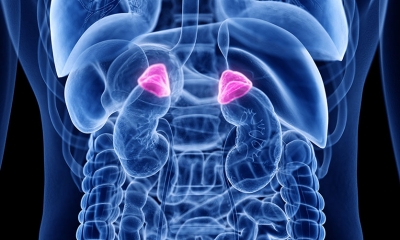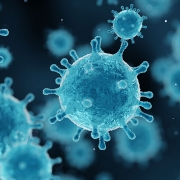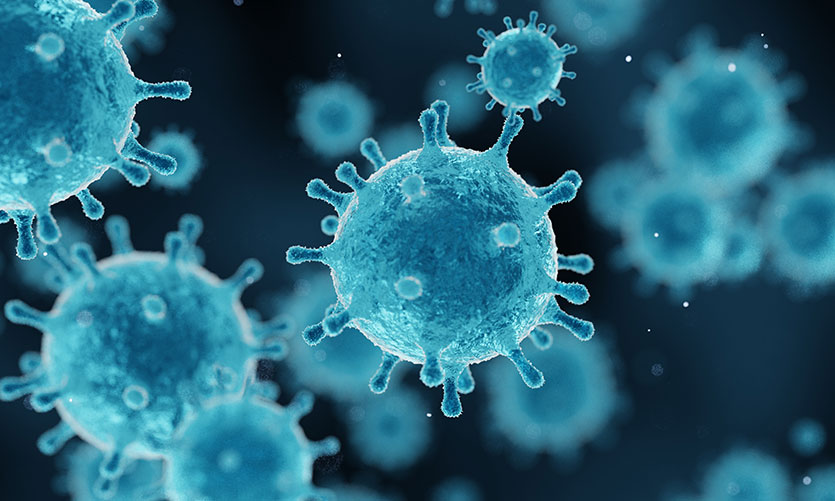Stress is part of the human experience. Since the evolution of early man, you’ve been hard-wired to encounter stressful situations. And though threats from predators may not be common in modern life, the fight-or-flight response has not been left behind. Evolutionary mechanisms for survival are useful tools for long-term health.
By harnessing the power of stress, you can empower your health. It’s true, a certain level of stress can be quite healthy. And given it is nearly impossible to escape stress in your daily life, this is good news. There are ways to utilize the benefits of short-term stress to create a calmer, more relaxed mindset. Purposeful stress—or good sources of stress—can activate cellular pathways that support greater resilience to other stresses.
Too Much Fight or Flight
Moments of crisis trigger complex physiological adaptations deeply engrained in your DNA. When you perceive your safety is in danger, these instincts prepare you to react. Short-term stress response spurs action through a flood of hormone responses. A sudden surge of cortisol and adrenaline produced in the adrenal glands prepares you to react quickly. But as the danger lessens, the parasympathetic nervous system presses the brakes on this excitatory response, helping to bring you back to baseline.
At optimal levels, stress hormones make you feel alive and activate better performance and focus. But when you are unable to return to a state of calm, or if your stress response is activated too often, the effects of chronic stress can take a physical and psychological toll. This negative impact can lead to a variety of health issues.
From Distress to Eustress
Your perception of negative circumstances ties directly to your behavior and the regulation of physiological responses. Adopting an optimistic outlook can change your mental and physical health for the good. By shifting your mindset in moments of stress, you can reframe how you handle these experiences.
Eustress is “good stress,” or normal-to-moderate psychological stress that’s actually beneficial. It helps activate genetically encoded pathways to help you deal with stress. The more you experience life with a positive attitude, new challenges will provide opportunities for growth, focused attention, and activation without expending all of your resources. In its best form, eustress can induce a state of flow—complete immersion and enjoyment in the process of an activity.
Some attributes of eustress include:
- lasts a short period of time
- energizes and motivates
- feels exciting
- increases focus and performance
Good sources of stress can include a job interview, riding a rollercoaster, the thrill of a scary movie, traveling, or even a first date. These experiences mobilize and stimulate you, making you anticipate what’s to come. Eustress is part of the joy of being human.
Find Your Edge with Short-Term Stress
Avoiding stress altogether isn’t the answer to better health. Many scientists believe building a resilience to environmental stress is the best way to fight back and live healthier.
Evolution has equipped you with an amazing system to handle daily stress. But your physiologic response—how hormones react to distress—is thrown off balance with too much stimulus. Short-term stress can amplify your life for the better, but raised levels of cortisol sustained over long periods can lead to poor health. Paradoxically, introducing voluntary bursts of controlled stress can help increase your stress tolerance.
A Life of Greater Resilience
The ability to cope with physiological stress depends on cellular-level adaptations mixed with your mental perception of difficult situations.
Of course, always consult with your physician before diving into a new routine. But if you’re healthy and excited to experiment with benefits from short-term, stress-inducing practices, give one of these five options a try. You may just open a new gateway for enhanced performance, better health, and a rewarding new adventure.
1. Eating to Adapt
Hormesis is a mild stress response that’s adaptive at a low dose and toxic in large amounts. A hormetic response can cause adaptations in cells and organisms to make them stronger and more robust. Foods you eat mimic this beneficial response to toxins and the transformative effect they can have on your health.
Toxic plant compounds are designed to affect the nervous system of insects and animals in the wild. But in humans, they have the possibility to make you stronger. Nutrient-dense plants have built-in defense mechanisms that can induce a healthy, manageable stress response. Phytonutrients from plants, despite being slightly stressful to the cells, precondition your body to respond to future stress by activating adaptive cellular stress-response pathways. Basically, a little poison can go a long way for improved health. See an example about liver detoxification here.
Common Compounds Found in Plants
- Saponins—quinoa
- Lectins—soy and potatoes
- Gluten—wheat, rye, and barley
- Anthocyanins—berries
- Resveratrol—grape skins and red wine
- EGCG—green tea
- Sulforaphane—broccoli and other cruciferous vegetables
- Catechins—cacao
People sensitive to these compounds shouldn’t consume them. If you have existing gut issues, talk with your health-care provider or nutritionist about the best strategy to incorporate healthy, mild stressors into your diet. If consuming a plant-based diet is problematic, cooking with herbs and spices is a great alternative.
2. Born to Move
A difficult workout can scratch your ancestral itch to move. Long gone are the days of scavenging for food or hunting for game to simply survive—activities your body was designed to do.
Today’s more sedentary lifestyle suppresses the all-day-long movement you instinctually crave. Regular exercise is essential for mental and physical health. It gives you more energy for life and serves as a buffer against the effects of stress and mental health issues by enhancing your brain’s endorphins—it’s “feel-good” neurotransmitters.
Movement and exercise of your skeletal muscle also creates oxidative stress in the body, triggering your defense response system. As it repairs, your body becomes stronger, creating a greater level of endurance. However, too much exercise can lead to chronic stress, so it’s important to listen to your body and exercise in the way that’s right for you.
3. Turn Up the Heat
Have you ever wondered why fitness clubs and health spas offer dry and steam saunas? It may seem counterintuitive to crank up the heat and endure the discomfort of a profuse sweat session.
Heat stress is a hot topic in many fitness and health circles today, but it’s been a regular practice in countries like Finland for thousands of years. The ancient practice of purification and healing by heat bathing has taken on modern significance. This lifestyle addition can induce feelings of relaxation and pleasure—whether used after a workout or as its own activity. Heat bathing is also associated with a calming effect and enhanced mood.
But heat stress is no joke. Regular, short-term exposure to extreme heat can have several positive health effects, including making you more resilient to biological stress.
Here are a few of the benefits of exercise and a regular, healthy sweat:
- Triggers an increased release of growth hormone
- Increases blood flow to skeletal muscles (muscle profusion) to help recovery and restore glucose, amino acids, fatty acids, and oxygen more efficiently
- Enhances endurance and supports cardiovascular health
- Increases red-blood-cell count
- Improves thermoregulatory control
- Enhances efficiency of oxygen transport to the muscles
- Supports healthy insulin sensitivity
With these compelling benefits, regular hyperthermic conditioning (intentionally heating yourself up) may just be the new habit you need for added endurance, improved health, and greater well-being.
4. A Cooler Way to Be Healthy
If you’ve ever stepped outside on a frigid winter’s day, you know how quickly your body reacts. Shivering begins almost immediately. Extreme cold is another hormetic stressor that can do wonders for your body.
Cryotherapy—exposing the body to extremely cold temperatures for a short amount of time—triggers cellular responses that can build physiological resilience. In the right doses, cold can affect the brain, immune system, and metabolism in amazing ways that may be worth the initial shock to your system.
Cold exposure has been found to have a positive effect on the sympathetic nervous system, helping to improve mood and anxiety. It’s also a powerful antidote for the negative effects of chronic stress.
The metabolic response to cold therapy exists for one purpose, to warm the body. As you shiver, your muscles contract involuntarily in an attempt to produce heat. Another process, non-shivering thermogenesis, causes norepinephrine—a hormone and neurotransmitter—to ignite a bodily response to create more mitochondria. As your body heats back up, it converts adipose tissue (fat) into a more metabolically active form. So, a cold dip could even be an exhilarating way to support weight maintenance.
Here are some ways to experiment with cold exposure:
- Schedule an appointment to test a cryotherapy chamber
- Construct a cold-water plunge tub in your backyard
- Crank the temperature way down for the last 60 seconds of your morning shower
- Add ice to your bathtub and take the plunge
- Dip into a cold river or lake
5. Fast for Metabolic Flexibility
Fasting—abstaining or limiting your consumption of food and drink—can seem contrary to healthy behavior and stressful for your body. After all, you need nutrients to feed and energize your cells. But taking periodic breaks from feeding may be the healthy strategy you need to boost resilience, energize and rejuvenate your body, and create favorable metabolic health changes.
As you fast, liver glycogen stores (carbohydrates held for later use) are depleted. This forces your body to flip a metabolic switch to shift your energy balance and mobilize fatty acids. In a fasted state, your body liberates fat stores and produces ketones as an alternative energy source to its preferred one—glucose.
Over time, metabolic stress from switching from a fed to a fasted state causes adaptations to improve metabolic and homeostasis function, enhance autophagy (the cells’ clean-up process), and support healthy weight management.
Common types of fasting include:
- Time-restricted feeding or intermittent fasting—limits food intake to certain designated times of day without reducing the number of calories you consume. The popular 16:8 fast limits food for 16 hours each day with an eight-hour feeding window.
- Alternate-day fasting—fasting every other day or consuming a small amount of food on “fasted” days.
- Prolonged fasting—a longer fast that usually exceeds 48 hours. This method should only be practiced with supervision from your healthcare provider.
Reconsider Your Healthy Routine with Stress Benefits in Mind
How humans experience stress has changed throughout history, but your evolutionary biology remains. You have the power to leverage stress-response to transform your health, enhance your performance, and change your mind about discomfort. Experiment with stress tolerance by adding purposeful stress into your health routine today. It’s a great way to help you experience the lasting benefits of short-term stress.
References
https://www.ncbi.nlm.nih.gov/pmc/articles/PMC5137920/
https://positivepsychology.com/what-is-eustress/
https://www.cell.com/trends/neurosciences/comments/S0166-2236(06)00200-1
https://pdfs.semanticscholar.org/72a8/583ccee1928028a128d40589ec60f253d6ec.pdf
https://www.ncbi.nlm.nih.gov/pmc/articles/PMC4142018/
https://pubmed.ncbi.nlm.nih.gov/30077204/
https://pubmed.ncbi.nlm.nih.gov/2759081/
https://pubmed.ncbi.nlm.nih.gov/18461718/
https://www.ncbi.nlm.nih.gov/pmc/articles/PMC2734249/
https://www.sciencedirect.com/topics/medicine-and-dentistry/nonshivering-thermogenesis
https://www.ncbi.nlm.nih.gov/pmc/articles/PMC5913738/
https://www.ncbi.nlm.nih.gov/pmc/articles/PMC5783752/
https://www.sciencedirect.com/science/article/pii/B9780128142530000127












